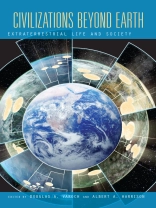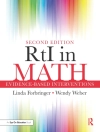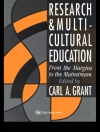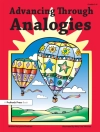Astronomers around the world are pointing their telescopes toward the heavens, searching for signs of intelligent life. If they make contact with an advanced alien civilization, how will humankind respond? In thinking about first contact, the contributors to this volume present new empirical and theoretical research on the societal dimensions of the Search for Extraterrestrial Intelligence (SETI). Archaeologists and astronomers explore the likelihood that extraterrestrial intelligence exists, using scientific insights to estimate such elusive factors as the longevity of technological societies. Sociologists present the latest findings of novel surveys, tapping into the public’s attitudes about life beyond Earth to show how religion and education influence beliefs about extraterrestrials. Scholars from such diverse disciplines as mathematics, chemistry, journalism, and religious studies offer innovative solutions for bridging the cultural gap between human and extraterrestrial civilizations, while recognizing the tremendous challenges of communicating at interstellar distances. At a time when new planets are being discovered around other stars at an unprecedented rate, this collection provides a much needed guide to the human impact of discovering we are not alone in the universe.
Inhoudsopgave
List of Figures
Acknowledgements
Introduction: The Search for Extraterrestrial Intelligence as an Interdisciplinary Effort
Albert A. Harrison and Douglas A. Vakoch
PART I: DOES EXTRATERRESTRIAL LIFE EXIST?
Chapter 1. Are We Alone? Estimating the Prevalence of Extraterrestrial Intelligence
Seth Shostak
Chapter 2. Encountering Alternative Intelligences: Cognitive Archaeology and SETI
Paul K. Wason
Chapter 3. The Lifetimes of Scientific Civilizations and the Genetic Evolution of the Brain
Alan J. Penny
Chapter 4. ‘L’ on Earth
Kathryn Denning
PART II: REACTIONS TO DISCOVERING LIFE BEYOND EARTH
Chapter 5. Can SETI Fulfill the Value Agenda of Cultural Anthropology?
Donald E. Tarter
Chapter 6. American Attitudes about Life beyond Earth: Beliefs, Concerns, and the Role of Education and Religion in Shaping Public Perceptions
George Pettinico
Chapter 7. Cultural Beliefs about Extraterrestrials: A Questionnaire Study
William Sims Bainbridge
Chapter 8. The Science and Politics of SETI: How to Succeed in an Era of Make Believe History and Pseudoscience
Albert A. Harrison
PART III: COMMUNICATION WITH EXTRATERRESTRIAL INTELLIGENCE
Chapter 9. Cultural Aspects of Interstellar Communication
Carl L. De Vito
Chapter 10. Cosmic Storytelling: Primitive Observables as Rosetta Analogies
Harry Letaw, Jr.
Chapter 11. Direct Contact with Extraterrestrials via Computer Emulation
William Sims Bainbridge
Chapter 12. The Inscrutable Names of God: The Jesuit Missions of New France as a Model for SETI-Related Spiritual Questions
Jason T. Kuznicki
Chapter 13. ET Phone Darwin: What Can an Evolutionary Understanding of Animal Communication and Art Contribute to Our Understanding of Methods for Interstellar Communication?
Kathryn Coe, Craig T. Palmer, and Christina Pomianek
Chapter 14. A Journalistic Perspective on SETI-Related Message Composition
Morris Jones
Notes on Contributors
Over de auteur
Albert A. Harrison (1940-2015) was Professor Emeritus in the Department of Psychology at the University of California, Davis. In addition to researching the societal dimensions of astrobiology and SETI, he studied human adaptation to spaceflight and spaceflight-analogous environments. His books include After Contact: The Human Response to Extraterrestrial Life; Starstruck: Cosmic Visions in Science, Religion, and Folklore; Spacefaring: The Human Dimension; Living Aloft: Human Requirements for Extended Spaceflight; and From Antarctica to Outer Space: Life in Isolation and Confinement.












